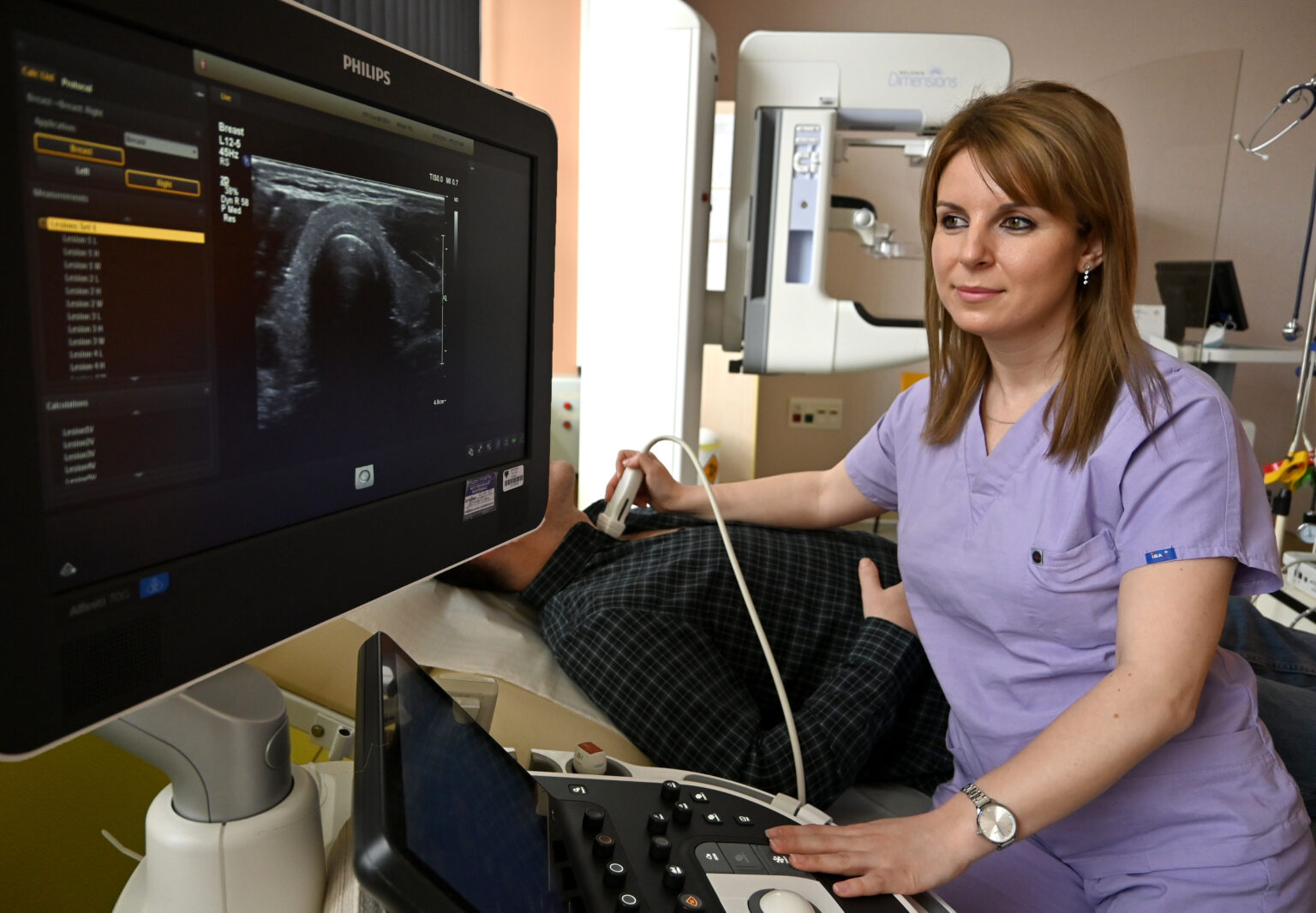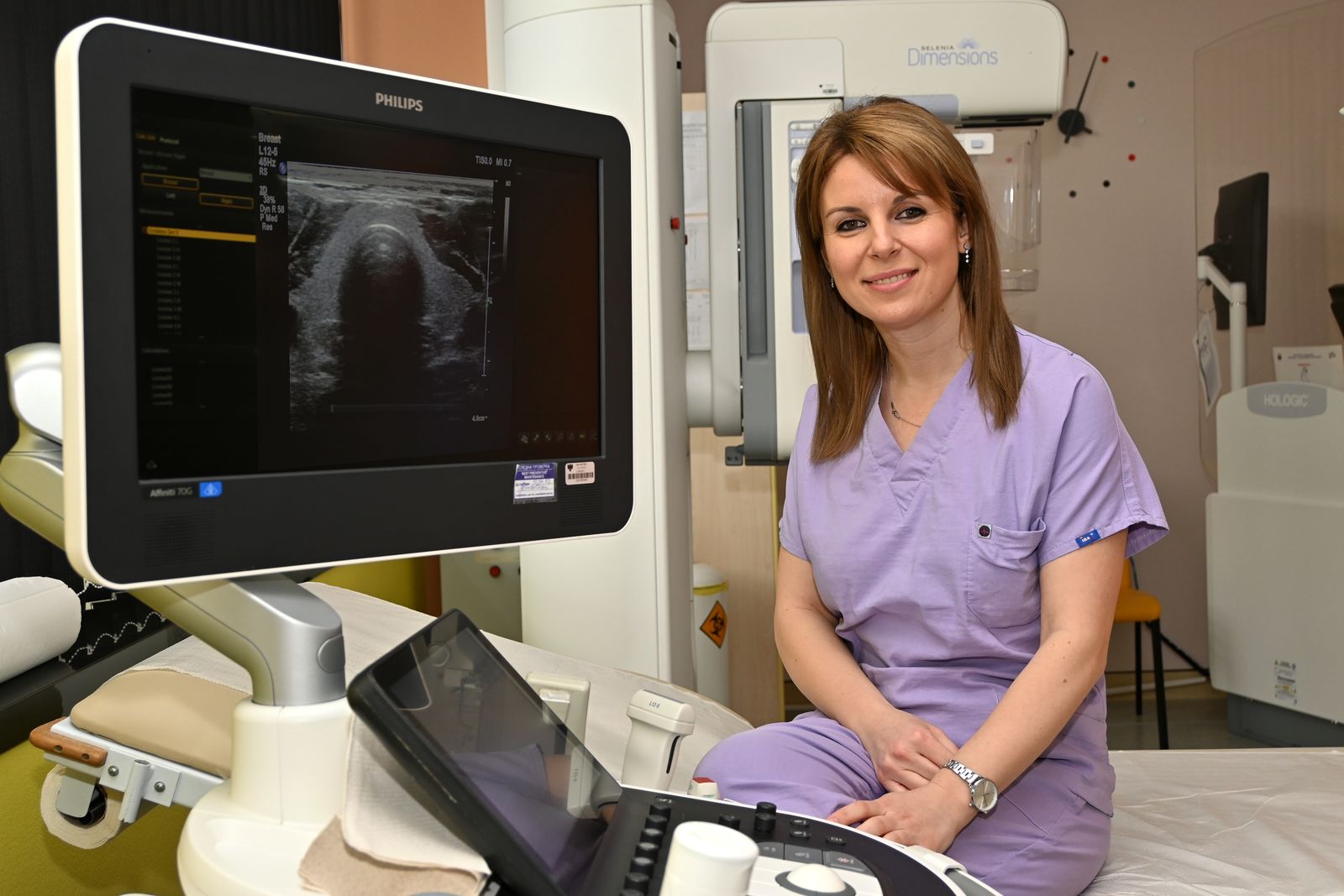 00389 2 3091 484
00389 2 3091 484
MEDICAL SERVICES
ENDOCRINOLOGY
Endocrinology services
Endocrinology is a branch of the medicine which covers the glands or tissues which effuse highly specific substances called hormones in the blood for the needs of the other tissues.
Numerous special characteristics of the endocrinologic disease make the endocrinology patient much more different from the patients seen in the day-to-day practice.
One of the features is revealing of abnormalities through scanning of the asymptomatic units, for example, high levels of serum calcium found during the routine check-up or elevated glycemic level during routine measurement. The second special feature of the endocrinologic disorders is that they are quantitative rather than qualitative discrepancies from the norm. There are no endocrinologic disorders due to unusual hormone.
Nevertheless, they have an enormous effect on the quality of life and consequently, the successful diagnostics and intervention can be especially important for the patient and for the family.
- Investigation
- Pituitary gland diseases
- Thyroid gland diseases
- Parathyroid gland diseases
- Adrenal gland diseases and endocrine hypertensions
- Pancreatic endocrinologic diseases
- Reproductive endocrinology (polycystic ovarian syndrome)
- Diabetes type 1 and 2
- Gestation diabetes
- Osteoporosis
- Hyperlipidemia
- Metabolic syndrome (obesity)
- Endocrinology services

Diabetes
Prediabetes
According to the American Diabetes Association (ADA), prediabetes is a situation of raised blood glycose levels above the normal values, but still not high enough to be diagnosed as diabetes.
The risk factors for occurrence of prediabetes are basically the same as for diabetes.
They include persons over 45 years of age, positive family history of diabetes, increased body weight (followed by hyperinsulinemia or insulin resistance), presence of metabolic syndrome (increased blood pressure, increased cholesterol and body weight), physical inactivity etc.
Prediabetes is manifested with two conditions – disrupted fasting glycemia and disrupted glycose tolerance.
It should be noted that the process of damaging the small blood vessels of the heart, eyes, brain, kidneys starts in this phase. According to the American Diabetes Association, these patients are under permanent risk of developing type 2 diabetes (25-40% risk in the following 5 years) and increased risk of cardiovascular disease.
The good news is that this condition can completely withdraw, and that the organism can be back to the healthy homeostasis or at least delay the occurrence of diabetes for a longer period of time.
Investigation
- Laboratory investigations (hormonal analyses)
- Endocrinologic tests (OGTT, OGTT with insulinemia)
Type 2 diabetes
Diabetes is a disease which is manifested with raised level of glycose in the blood. The risk for occurrence of type 2 diabetes is multifactorial. Genetic predisposition (family anamnesis), day-to-day tempo of life with irregular and unhealthy diet, weak or nonexistent physical activity, irregular body biorhythm (sleep and waking up), lack of mechanism for good stress management as well as increased body weight.
The symptoms and signs of type 2 diabetes include dry mouth, thirst, frequent urination, weight loss, blurred vision and need for larger food intake.
The oral glycose tolerance test is a golden standard for diagnosing diabetes.
The American Diabetes Association (ADA) recommends screening of all persons over 45 years of age, every 3 years and screening of younger persons if they have increased body weight (body mass index exceeding 25 kg/m2) and if they have an additional risk factor for diabetes (positive family anamnesis, increased blood pressure, obesity, previously recorded increased fasting glycemia values or presence of insulin resistance, polycystic ovarian syndrome etc.).
Timely and relevant diagnostic as well as the proper treatment of type 2 diabetes, its regular control and monitoring can change the natural history and prognosis of the disease and minimize the risk of any complications.
Investigations
- Laboratory investigations (fasting glycemia, HbA1c – glycated hemoglobin, insulin)
- Endocrinologic tests (OGTT, OGTT with insulinemia)
Gestation diabetes
Gestation diabetes is a diabetes that occurs during pregnancy without any previous history of diagnosed diabetes or increased glycemic values. It is most common in the third trimester of the pregnancy and in case it occurs in the first two trimesters it is usually type 1 or type 2 diabetes.
Risk factors include increased body weight, polycystic ovarian syndrome, positive family anamnesis for diabetes, baby weight at birth in previous pregnancy exceeding 4 kg, physical inactivity or existing prediabetes.
Gestation diabetes is diagnosed with oral glycose tolerance test which is performed between 24-28 gestation week, and in case of previous risk factors, than it can be performed in the first trimester (12th gestation week).
The gestation diabetes usually ends after the childbirth and everything is back to normal, but 50% of women with gestation diabetes, in time, will develop type 2 diabetes. Therefore it is necessary to check the glycemic status after 6-12 weeks.
Investigations
- Laboratory investigations (fasting glycemia, HbA1c – glycated hemoglobin, insulin)
- Endocrinologic tests (OGTT)

Pituitary gland diseases
The pituitary gland is an endocrine gland situated in the base of the skull which releases many hormones responsible for maintaining the physiological body balance. Consists of frontal (adenohypophysis) and back part (neurohypophysis).
Together with the hypothalamus they are forming a functional unit which controls the function of several endocrine glands – thyroid, adrenal and sex glands. Pituitary gland adenomas are benign changes which are developed from one of the five cellular types that form the frontal hypophysis. They are the most common for the syndromes of hypersecretion and hyposecretion of hypophysis hormones in adults.
Investigations
– Laboratory investigation (hormone analyses)
– Radio-diagnostic investigation (MRI of hypophysis)
Treatment
– Medication treatment
Adrenal gland

Adrenal gland diseases and endocrine hypertensions
The adrenal gland is paired endocrine organ situated in the retroperitoneal space, on the upper poles of both kidneys. Its morphology consists of the outer cortex and inner medulla and each of these compartments effuses certain types of hormones (cortisol, aldosterone, adrenal androgens, adrenalin etc.).
The adrenal gland diseases lead to classical endocrinopathies such as Cushing’s syndrome, Addisson’s disease, hyperaldosteronism.
Pheochromocytomas are tumors which originate from the core of the adrenal gland.
Arterial hypertension is a dominant component of numerous endocrinologic diseases, usually the ones that involve the adrenal glands (pheochromocytoma, primary hyperaldosteronism) and hypophysis (ACTH producing tumors), but also acromegalia, thyrotoxicosis, hyperparathyroidism.
The changes that may occur in the adrenal gland also include the incidentaloma. It is an adrenal mass which has been discovered by chance, usually during some of the radiographic techniques (echo, CT or MR of abdomen), primary targeting another condition. Adrenal incidentalomas are hormonally active only in 20% of the cases. In the nonfunctional ones, weight loss and blunt abdominal pain may occur. In case it is found that the adrenal incidentaloma is functionally active, it should be surgically removed. Inactive incidentalomas are usually just monitored.
Investigations
– Laboratory investigation (hormone analyses)
– Radio-diagnostic investigation (MRI of adrenal compartments)
Treatment
– Medication treatment
– Surgical treatment

Thyroid gland diseases
The thyroid gland is situated in the frontal part of the neck and consists of two lobes connected by isthmus. Thyroid gland disorders may be morphological and functional.
Morphological or structural disorders of the gland manifest as nodular or cystic formations, while functional disorders can stimulate excessive production of thyroid hormones (hypothyroidism) or cause the destruction of the gland and lack of hormones (hypothyroidism). Thyroid gland disorders also include acute (subacute thyroiditis) and chronic inflammation (Hashimoto thyroiditis).
Carcinoma of the thyroid gland is the most common malignant disease of the endocrinology system. Differentiated tumors such as papillary carcinoma or follicular carcinoma of the thyroid gland can typically be cured, and the prognosis is good for patients where the disease had been detected in the early phase. Anaplastic carcinoma is aggressive, responds poorly to treatment, and has poor prognosis. Medullar carcinoma accounts of 5-10% of all types of thyroid gland carcinomas.
These carcinomas are primarily treated with surgery.
Investigations
– Laboratory investigation (hormone analyses)
– Radiological diagnostic investigation (Ultrasound of the thyroid gland, CT of the neck)
– Fine needle aspiration biopsy (FNAB)
Treatment
– Medication treatment
– Surgical treatment

Parathyroid gland diseases
Parathyroid glands are endocrine glands, there are 4 of them and they are situated on the upper and lower poles of both lobes of the thyroid gland on the posterior side. They produce parathyroid hormone which is a primary calcium metabolism regulator.
The most common disease of the parathyroid gland is excessive production of parathyroid hormone (hyperparathyroidism) as a result of the autonomous functioning adenomas or hyperplasia, and it is a common reason for increased values of calcium in blood. It can be manifested with multiple signs and symptoms including repetitive nephrolithiasis (kidney stones), peptic ulcers, mental changes and less frequently severe bone weakness. The diagnosis is often placed in patients who do not have any symptoms except increased laboratory values of calcium and parathyroid hormone. In case of severely increased calcium level, proven existence of benign change at any of the parathyroid glands as well as severe symptomatology, the definitive treatment is surgical removal of the diseased parathyroid gland.
Investigations
– Laboratory investigation (hormone analyses)
– Radio-diagnostic investigation (neck ultrasound, neck CT, neck MRI)
Treatment
– Medication treatment
– Surgical treatment

Pancreatic endocrinologic diseases – Insulinoma
Insulinoma is a tumor that originates from the Beta cells of the pancreas and effuses insulin. Most of those tumors are benign. The basic pathophysiological characteristics of this phenomenon is the inability to reduce the secretion of insulin in case of hypoglycemia.
Insulinoma occurs in one in 250,000 persons. The median age is around 50. Their presence is discovered due to hypoglycemia, not their dimensions. Computer assisted tomography reveals around 70-80% of the insulinomas, and magnetic resonance reveals around 85%. Surigical removal of the insulinoma usually leads to complete recovery.
Investigations
– Laboratory investigation (hormone analyses)
– Endocrinologic tests
– Radio-diagnostic investigation (MRI or CT of pancreas)
Treatment
– Surgical treatment

Polycystic ovarian syndrome
Polycystic ovarian syndrome is the most common endocrinological disease in the reproductive period of the women with complex pathophysiology and multifactorial etiology.
The etiology of the PCOS is not completely clear, although basic primary disorders include disrupted steroidogenesis, hyperinsulinemia and neuroendocrine disorder. Diagnosis is usually based on the clinical characteristics such as polycystic ovaria, hyperandrogenism and anovulation, although additional investigations may be needed such as biochemical tests. All these characteristics are manifested as menstrual disorders (irregular menstrual cycle), acne, increased hairiness (hirsutism), obesity, infertility. Timely diagnosis and instigation of appropriate therapy are very important for prevention or delay of the PCOS consequences on the reproductive and metabolic health of the women.
Investigations
– Laboratory investigation (hormone analyses)
Treatment
– Medication treatment

Osteoporosis
Osteoporosis is a situation of reduced bone density with increased risk of fracture. It is more common in women during the menopause as a result of the estrogen deficit, but it can also occur in men usually as secondary disease during long term application of corticosteroid therapy.
Risk factors for osteoporosis include advanced age, smoking, alcoholism, estrogen deficit, long term therapy with corticosteroids. The main clinical manifestations of the osteoporosis include vertebral fractures and hip fractures as most common localization but also in any other skeletal location.
Screening for osteoporosis should be made in 65-year-old women and older or younger where the risk of fracture is the same or larger than in 65-year-old women without additional risk factors.
Densitometry is a high precision x-ray technique. Although it can be used to measure any skeletal bone, clinical measurements are usually made on the lumbar vertebrae and hips, and if necessary on the forearm. Although many techniques have been developed for this purpose, osteodensitometry offers the most precise measurement on several skeletal locations with the least radiation exposure.
Investigations
– Laboratory investigation (hormone analyses and bone markers)
– Radio-diagnostic investigation (bone densitometry – DEXA scan)
Treatment
– Medication treatment

Hyperlipidemia
The lipoprotein metabolism disorders may be primary and secondary. The primary are divided in conditions which cause increase of the LDL cholesterol with normal values of the triglycerides and conditions that cause increased triglycerides.
The secondary hyperlipidemias are various diseases where significant changes in the plasma lipoproteins are observed. Before starting the therapy it is very important to reduce the lipides, consider the secondary reasons for hyperlipidemia (obesity, diabetes mellitus, thyroid gland diseases, renal disorders, liver disorders, alcohol, medications). The most important first step in the treatment of a lipid disorder is to identify the class or classes of increased lipoproteins. The treatment may be non-pharmacological (diet), reduction of the body weight and physical activity) and pharmacological (statins, fibrates).
Investigations
– Laboratory investigation (lipide profile)
Treatment
– Medication treatment

Obesity
Obesity is a condition of disturbed body constitution, defined as relative or absolute excess of body fats and characterized with several significant features. Excess body fats mostly result with increase of the body weight.
The most used tool in our clinical practice is the body mass index (BMI) which is a ratio between the body weight and square of the body height. According to the body mass index, excessive body weight and obesity are divided into several classes.
| Adult classification | БМИ |
| Undernourishment | < 18.5 kg/m² |
| Normal nourishment | 18.5 kg/m²-24.9 kg/m² |
| Overweight | 25.0 kg/m²-29.9 kg/m² |
| Obesity (class 1) | 30.0 kg/m²-34.9 kg/m² |
| Obesity (class 2) | 35.0 kg/m²-39.9 kg/m² |
| Obesity (class 3) | > 40.0 kg/m² |
It is hard to determine the certain connection between the diseases and obesity. These correlations are caused by many metabolic and hormonal changes which either lead to or originate from the excess fat tissue. For example, weak cardiorespiratory exercise, although closely connected to the body weight, is a strong and independent predictor of cardiovascular diseases and mortality. Other adjoining conditions in obese persons are dysfunctionality (disability, pain, discrimination, functional disorders), disrupted physiological wellbeing (nutrition disorders, depression and anxiety), diseases (type 2 diabetes, cardiovascular diseases, sleep apnea), carcinomas (endometrial, breast, colorectal).
Investigations
– Laboratory investigation (hormonal analyses and biochemical parameters)
Treatment
– Medication treatment
– Hospital treatment



